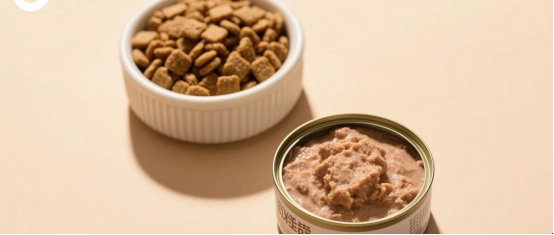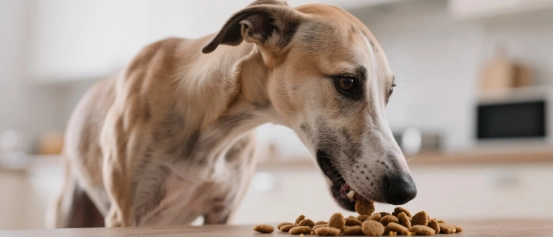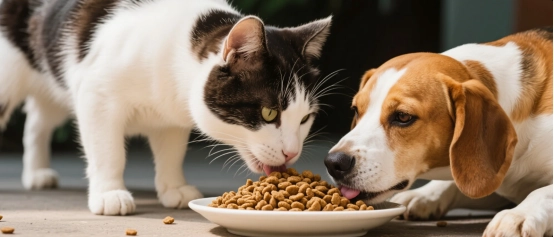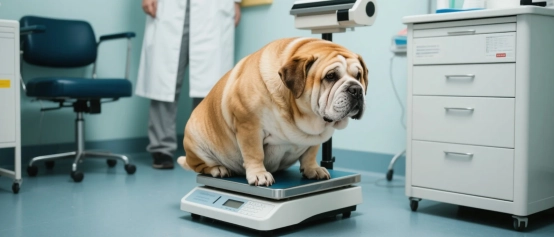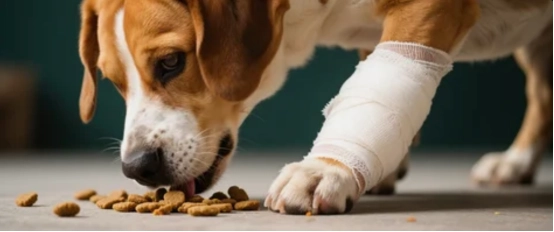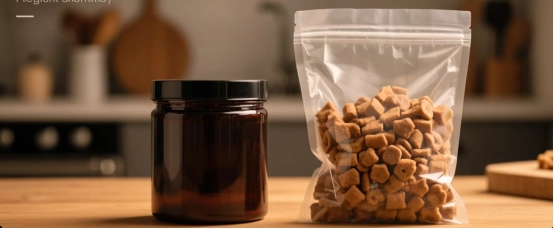
Properly storing dog food is essential for maintaining its nutritional quality, freshness, and safety, ensuring your dog enjoys a healthy and palatable diet. Improper storage can lead to spoilage, nutrient degradation, or contamination, which may harm your dog's health. This article explores the principles of dog food storage, covering dry and wet food specifics, environmental factors, container choices, and practical tips to help pet owners keep their dog's food in top condition.
Dog food, whether dry kibble or wet canned food, is formulated with a balance of nutrients that can degrade if not stored correctly. Exposure to air, moisture, heat, or pests can cause fats to oxidize, vitamins to break down, or bacteria and mold to grow, reducing the food's quality and safety. Spoiled food can lead to digestive issues, nutrient deficiencies, or even serious health problems for your dog. Additionally, improper storage can attract pests like rodents or insects, which pose hygiene risks. By storing dog food correctly, you preserve its shelf life, maintain its palatability, and protect your dog's well-being while minimizing waste.
Dry dog food, or kibble, is the most common type of dog food due to its convenience and longer shelf life compared to wet food. However, it still requires careful storage to stay fresh. First, keep unopened bags of dry dog food in a cool, dry place, ideally at room temperature (between 50°F and 70°F) and away from direct sunlight or heat sources like radiators or ovens. High temperatures can accelerate fat oxidation, causing the kibble to go rancid, while humidity can promote mold growth.
Once opened, the original bag alone isn't enough to protect the food from air and moisture. Transferring the kibble to an airtight container is highly recommended. Food-grade plastic or stainless steel containers with tight-sealing lids are ideal, as they block out air, moisture, and pests. Ensure the container is clean and dry before filling it to avoid contamination. If you prefer keeping the food in its original bag for convenience (e.g., to retain feeding instructions or batch numbers), place the entire bag inside a larger airtight container. Avoid pouring new food on top of old kibble in the container, as older food at the bottom may spoil unnoticed—use up the old food first or mix thoroughly to ensure even consumption.
Another key tip is to store only a manageable amount of kibble at a time. Buying in bulk can save money, but large bags left open for months can lose freshness. Check the "best by" date on the package, which typically ranges from 12 to 18 months from the manufacturing date for unopened dry food. Once opened, aim to use the food within 4-6 weeks for optimal freshness, especially for premium brands with natural preservatives like vitamin E, which have a shorter shelf life than those with synthetic preservatives.
Wet dog food, typically sold in cans or pouches, has a higher moisture content, making it more prone to spoilage once opened. Unopened cans or pouches can be stored at room temperature in a cool, dry place, away from heat sources or extreme cold, which can damage the can's integrity. Always check the expiration date, as unopened wet food generally lasts 2-5 years from the manufacturing date, depending on the brand.
Once opened, wet food must be refrigerated to prevent bacterial growth. Transfer any unused portion from a can to a clean, airtight glass or plastic container, as leaving food in an open can may lead to contamination or a metallic taste. Refrigerate the food at 35°F to 40°F and use it within 3-5 days. If you don't expect to use the entire can within this time, consider freezing the leftovers in portion-sized containers or ice cube trays for easy thawing later. Frozen wet food can last up to 6 months, but always thaw it in the refrigerator, not at room temperature, to avoid bacterial growth. Before serving, check for off smells, unusual textures, or discoloration, and discard any food that seems spoiled.
The storage environment plays a critical role in maintaining dog food quality. Temperature is a primary concern—both dry and wet food should be kept in a stable, cool environment. Avoid storing food in garages, sheds, or basements where temperature fluctuations or humidity are common, as these conditions can degrade nutrients or encourage mold and pests. Aim for a consistent temperature below 80°F, with 60-70°F being ideal for dry food storage.
Moisture is another enemy of dog food. Even dry kibble, which has low moisture content, can absorb humidity from the air, leading to mold or bacterial growth. Use a dehumidifier in storage areas if you live in a humid climate, and never store dog food near water sources like sinks or leaky pipes. Light exposure can also degrade nutrients, particularly fats and vitamins, so keep food in opaque containers or dark storage areas to minimize light exposure.
Pest control is equally important. Rodents, ants, or pantry moths can contaminate dog food, introducing harmful bacteria or toxins. Airtight containers are your first line of defense, but also ensure the storage area is clean and free of crumbs or spilled food that might attract pests. If you notice signs of infestation, such as small holes in the bag or insects in the food, discard the affected food immediately and sanitize the storage area.
To make dog food storage straightforward and effective, consider these actionable tips. First, always check the "best by" or expiration date before purchasing and rotate stock to use older food first. Second, label containers with the purchase or opening date to track freshness. Third, clean storage containers regularly with mild soap and water, ensuring they're completely dry before refilling to prevent bacterial growth. For households with multiple dogs or different diets, use separate, clearly labeled containers to avoid mix-ups, especially if one dog has dietary restrictions.
Portion control can also help maintain freshness. Instead of leaving a large bag open for daily scooping, divide it into smaller portions in resealable bags or containers, keeping the bulk sealed until needed. When traveling or feeding on the go, use portable, airtight containers to keep kibble fresh and avoid spills. Finally, monitor your dog's reaction to the food. If they refuse to eat, or if the food smells rancid or looks unusual, it may have spoiled due to improper storage—discard it to be safe.
Pet owners often make storage mistakes that can compromise dog food quality. One common error is leaving kibble in its original bag without sealing it properly, exposing it to air and moisture. Another is storing food in warm or humid areas, like near a stove or in a damp basement, which accelerates spoilage. Overbuying bulk quantities without proper storage can also lead to waste, as large bags may go stale before they're used up. For wet food, leaving leftovers in an open can in the fridge is a frequent mistake that risks contamination. Lastly, ignoring expiration dates or failing to check for spoilage signs can put your dog's health at risk.
Proper dog food storage is a simple yet vital practice that ensures your dog's food remains nutritious, safe, and appealing. By using airtight containers, controlling environmental factors like temperature and humidity, and following practical storage habits, you can preserve the quality of both dry and wet dog food. These steps not only protect your dog's health but also save you money by reducing waste. With a little care and attention, you can keep your dog's meals fresh and wholesome, supporting their health and happiness for the long haul.
